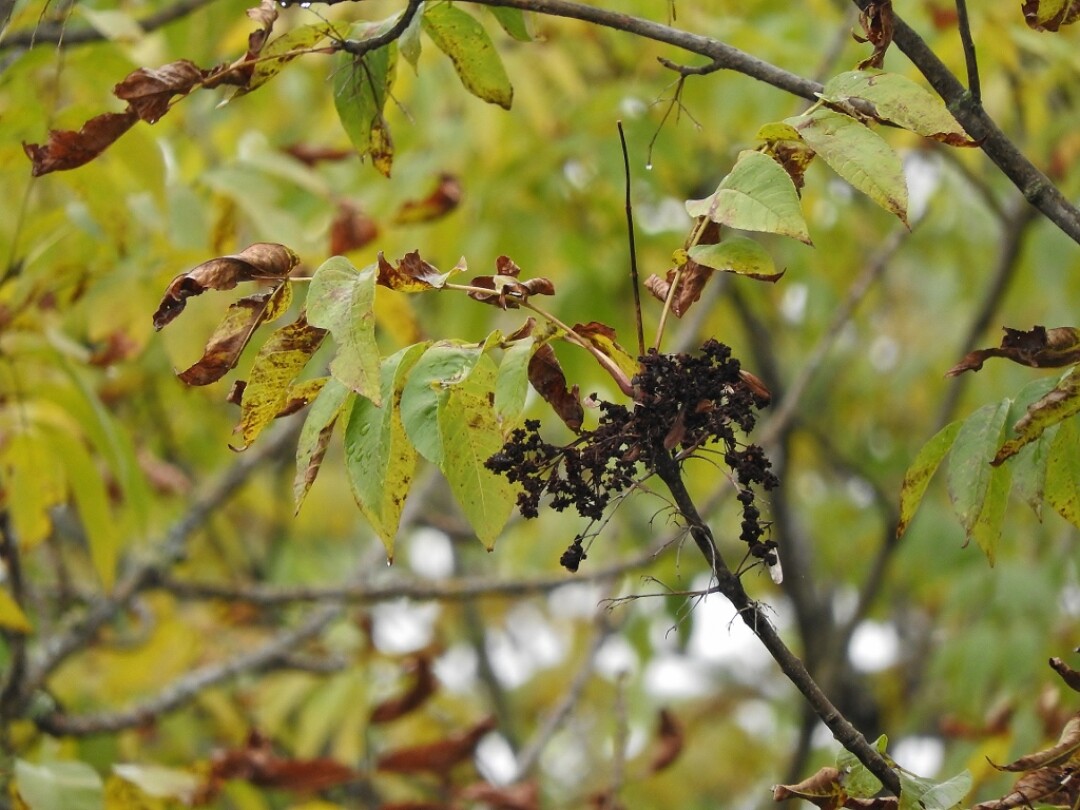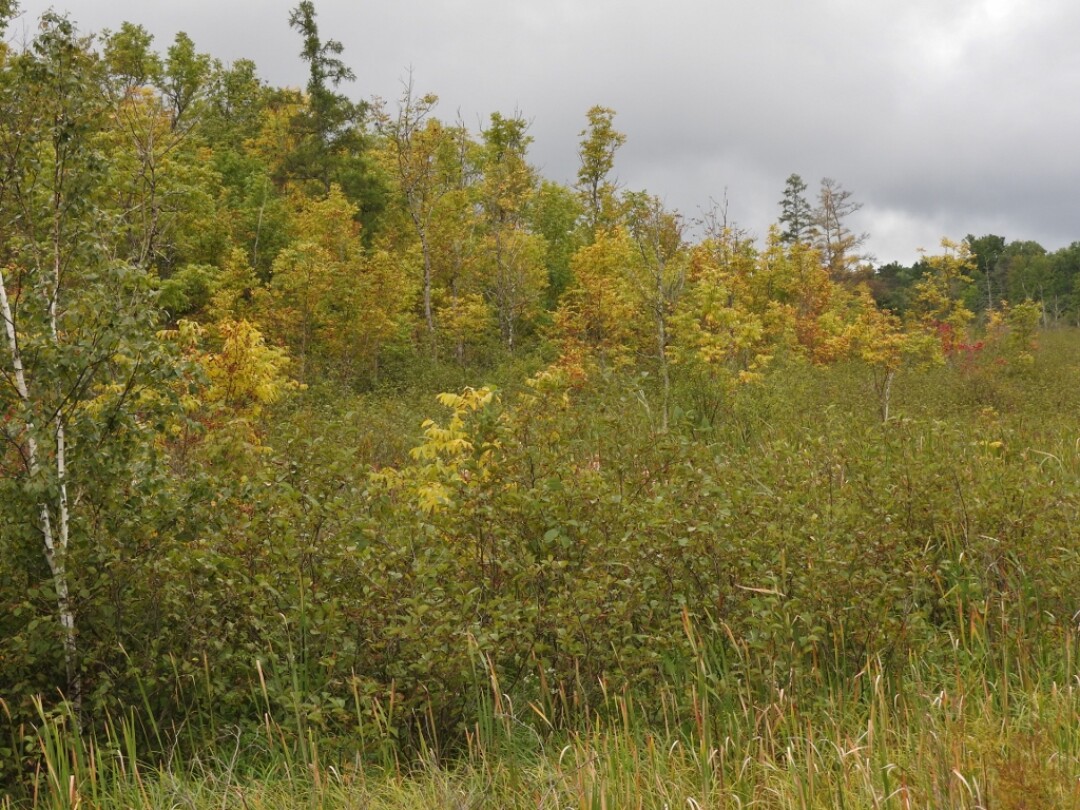The ash tree mystery

The male flowers on black ash trees are transformed into scraggly brown masses by a microscopic mite. Photos by Emily Stone.
I’ve always loved a good mystery. It probably started with The Boxcar Children books. Those mysteries aren’t about murders. They contain just the right amount of delicious suspense without being scary, and often I learned something from those books outside of my normal experience, too. The mysteries I read these days are about nature, whether in a book or in the wild. And recently, I’ve been seeing something mysterious in the woods.
Now that the cold weather is triggering trees to draw green chlorophyll back into their twigs, their yellow and orange pigments—always present—are suddenly visible. After swamp maples and other occasional stressed out trees, black ash trees are the first to show fall colors. Black ash swamps are currently a warm shade of gold, and provide a cheerful place to gaze while the clouds are gray and heavy. In among those sunny leaves, though, are scraggly, dark brown clumps about the size of a softball that I’ve puzzled about off and on for years.
Are they clumps of seeds? Well, no. Ash seeds do hang in clusters, but they take the shape of little, oblong samaras—winged seeds like maple helicopters—that change from pale green to straw-colored (not dark brown) as they ripen.
Are they clumps of dead leaves? It’s not that, either. Sometimes I do see ash trees where their leaves haven’t fallen off completely, but there aren’t scraggly clumps left behind; there are just elegant, yellow-green leaf petioles.
On a recent kayak trip down the Namekagon River, I spotted an ash tree with the mysterious clumps, and since I was paddling next to a forester, I pointed them out. “Well, you know,” she said, “individual ash trees are either male or female.” I didn’t know that! We reasoned that since the female trees would be producing the seeds—which look different than these clumps—these would most likely be the male flowers. Now I had a lead, and I brought it back to Google.
At first, the photos of male ash flowers that popped up just looked like small, maroon pompoms tipped with pollen, and that wasn’t helpful. But as I scrolled through the images, a brown clump appeared, and I followed it through to a blog post about ash flower galls. Of course. I should have guessed. The clumps are caused by critters!
Ash flower gall mites (Eriophyes fraxinivorus), look like translucent walruses. At only 2/100 of an inch long, however, they are not visible to the naked eye. All winter, fertilized female mites hang out on ash twigs, sometimes even crawling inside the fuzzy brown scales that protect the flower buds like a warm winter jacket. Come spring, the mites feed and lay eggs on the developing flowers. As with any gall, the feeding action stimulates the plant to grow around the interloper. On a goldenrod stem, for example, a fly larva creates a globe-shaped gall.
These ash flower gall mites cause a much more messy reaction. Under the mite’s influence, flower stems grow longer than normal, and even fuse with their neighbors. Everything curls, twists, branches and fringes, and forms a broccoli-like mass. Several generations of baby mites called nymphs find food and protection within the gall over the course of the summer.

Black ash swamps show their colors in early fall.
In September, the green gall turns into a woody, brown clump, and suddenly I start noticing and pondering this mystery all over again. Once dry, the galls may remain on the tree for a couple years, and can be unsightly, but won’t cause the tree much harm.
Galls are a widespread example of a symbiosis, where two different species have a close living relationship. I’ve written about oak apple galls, goldenrod galls, willow pine cone galls, willow rose galls, and aspen leaf galls—they’re all fascinating!
So, mystery solved, and yet another story about a gall added to my list. Maybe The Boxcar Children should add this one, too, and call it: “The Ash Tree Mystery.”
Emily’s award-winning second book, Natural Connections: Dreaming of an Elfin Skimmer, is now available to purchase at www.cablemuseum.org/books. Or order it from our friends at redberybooks.com to receive free shipping!
For more than 50 years, the Cable Natural History Museum has served to connect you to the Northwoods. The Museum is now open with our brand-new Mysteries of the Night exhibit. Connect with us on Facebook, Instagram, YouTube, and cablemuseum.org to see what we are up to.
